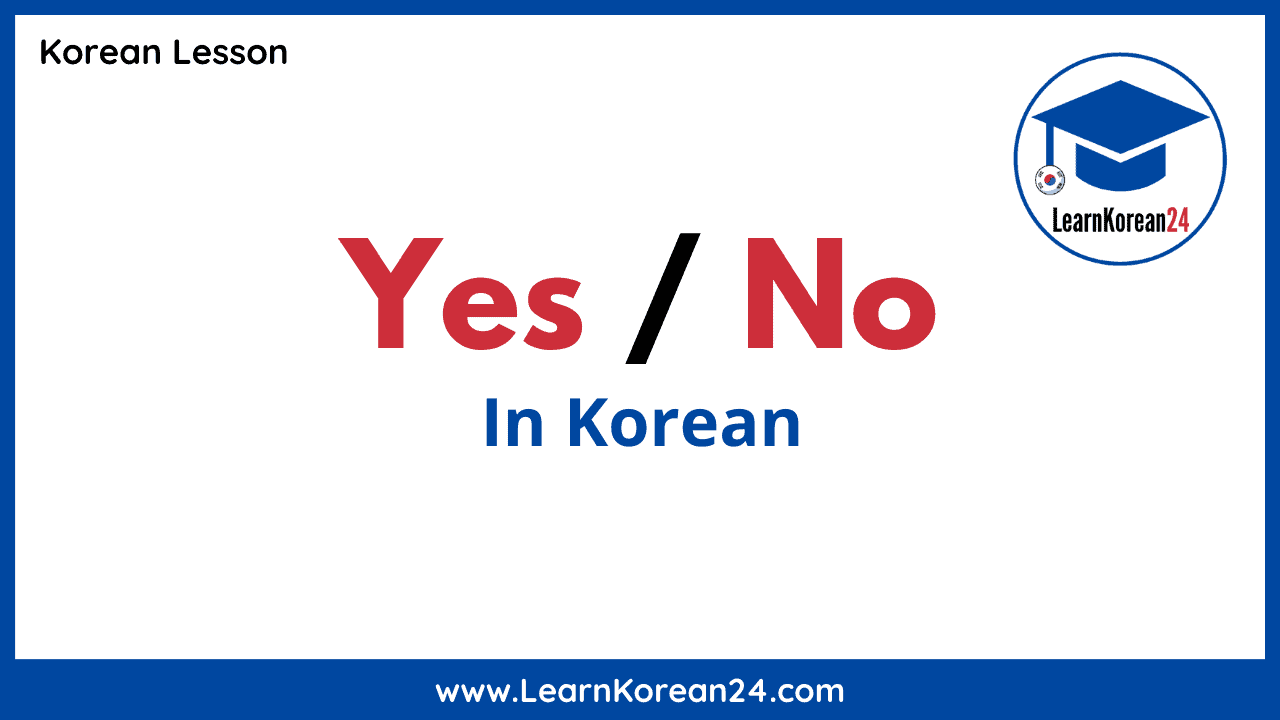Yes in Korean language, “네” (ne), is a versatile word that plays a crucial role in Korean communication. Understanding its usage, variations, and cultural significance is essential for effective communication in Korean.
This guide delves into the intricacies of “yes” in Korean, exploring its pronunciation, usage in different contexts, variations, and the cultural nuances associated with its use. By understanding the multifaceted nature of “yes” in Korean, learners can enhance their communication skills and navigate Korean interactions with confidence.
Definition and Pronunciation: Yes In Korean Language

In Korean, the word for “yes” is “네” (pronounced as “neh”). It is a simple and direct way to express agreement or affirmation in various situations.
Phonetic Pronunciation
The phonetic pronunciation of “네” in Korean is [ne]. It is a single syllable with a short, open vowel sound and a light consonant sound.
Writing Systems
The word “네” can be written in different Korean writing systems:
- Hangul:네
- Hanja:是
- Revised Romanization:ne
Usage and Context
In Korean, the word “yes” can be used in a variety of contexts, ranging from formal to informal settings. The choice of which word to use depends on the level of politeness and formality required in the situation.
Formal Settings
In formal settings, such as business meetings or interactions with strangers, it is considered polite to use the more formal word “예” (ye). This word is typically used when addressing someone who is older or in a position of authority.
Informal Settings
In informal settings, such as conversations with friends or family, it is acceptable to use the more informal word “응” (eung). This word is often used when speaking to someone who is younger or of equal status.
Cultural Nuances
It is important to note that the use of “yes” in Korean can also be influenced by cultural nuances. For example, it is considered impolite to say “yes” directly to someone who is asking a question. Instead, it is more common to use a more indirect response, such as “네, 알겠습니다” (ne, algesseumnida), which means “Yes, I understand.”
Variations and Synonyms

In Korean, there are several variations of “yes” that are used in different situations. These variations include “ne,” “ajik,” and “ye.” Each variation has its own subtle differences in meaning and usage.
Ne, Yes in korean language
“Ne” is the most common variation of “yes” and is used in most situations. It is a neutral word that can be used in both formal and informal settings. “Ne” is typically pronounced with a rising intonation, which gives it a slightly affirmative tone.
Ajik
“Ajik” is a more emphatic variation of “yes” that is used to express strong agreement or affirmation. It is often used in situations where the speaker wants to make sure that the listener understands their agreement. “Ajik” is typically pronounced with a falling intonation, which gives it a more forceful tone.
Ye
“Ye” is a more formal variation of “yes” that is used in polite or respectful situations. It is often used when speaking to elders, superiors, or strangers. “Ye” is typically pronounced with a flat intonation, which gives it a more neutral tone.
| Variation | Usage |
|---|---|
| Ne | Most common variation, used in both formal and informal settings |
| Ajik | Emphatic variation, used to express strong agreement or affirmation |
| Ye | Formal variation, used in polite or respectful situations |
Cultural Significance
The Korean language and culture place a great deal of importance on politeness and respect. This is reflected in the use of the word “yes,” which can convey a variety of meanings depending on the context in which it is used.
In general, “yes” is used to indicate agreement or affirmation. However, it can also be used to express politeness or deference, even when the speaker does not necessarily agree with what is being said. For example, a person might say “yes” to a request even if they are not able to fulfill it, simply to avoid appearing rude.
Understanding the Cultural Context
It is important to understand the cultural context in which “yes” is being used in order to interpret its meaning correctly. For example, if a Korean person says “yes” to a question, it does not necessarily mean that they are agreeing with the statement.
It could simply be a way of showing that they are listening and understanding.
Similarly, if a Korean person says “yes” to a request, it does not necessarily mean that they are going to do it. It could simply be a way of acknowledging the request and showing that they are considering it.
By understanding the cultural context in which “yes” is being used, you can avoid misunderstandings and communicate more effectively with Korean people.
Closing Summary

In conclusion, “yes” in Korean language is a complex and nuanced word that reflects Korean cultural values and communication norms. By understanding its variations, usage, and cultural significance, learners can effectively convey their agreement and navigate Korean conversations with cultural sensitivity.
Clarifying Questions
How do you pronounce “yes” in Korean?
The phonetic pronunciation of “yes” in Korean is “ne” (neh).
What are the different ways to write “yes” in Korean?
In Hangul, “yes” is written as “네”. In Hanja, it is written as “是”. In Revised Romanization, it is written as “ne”.
What are some variations of “yes” used in Korean?
Some variations of “yes” used in Korean include “ajik” (more formal), “eung” (casual), and “yeppo” (emphatic).
What are some cultural nuances associated with using “yes” in Korean?
In Korean culture, it is considered impolite to say “no” directly. Instead, Koreans often use indirect expressions or variations of “yes” to convey agreement while maintaining politeness.